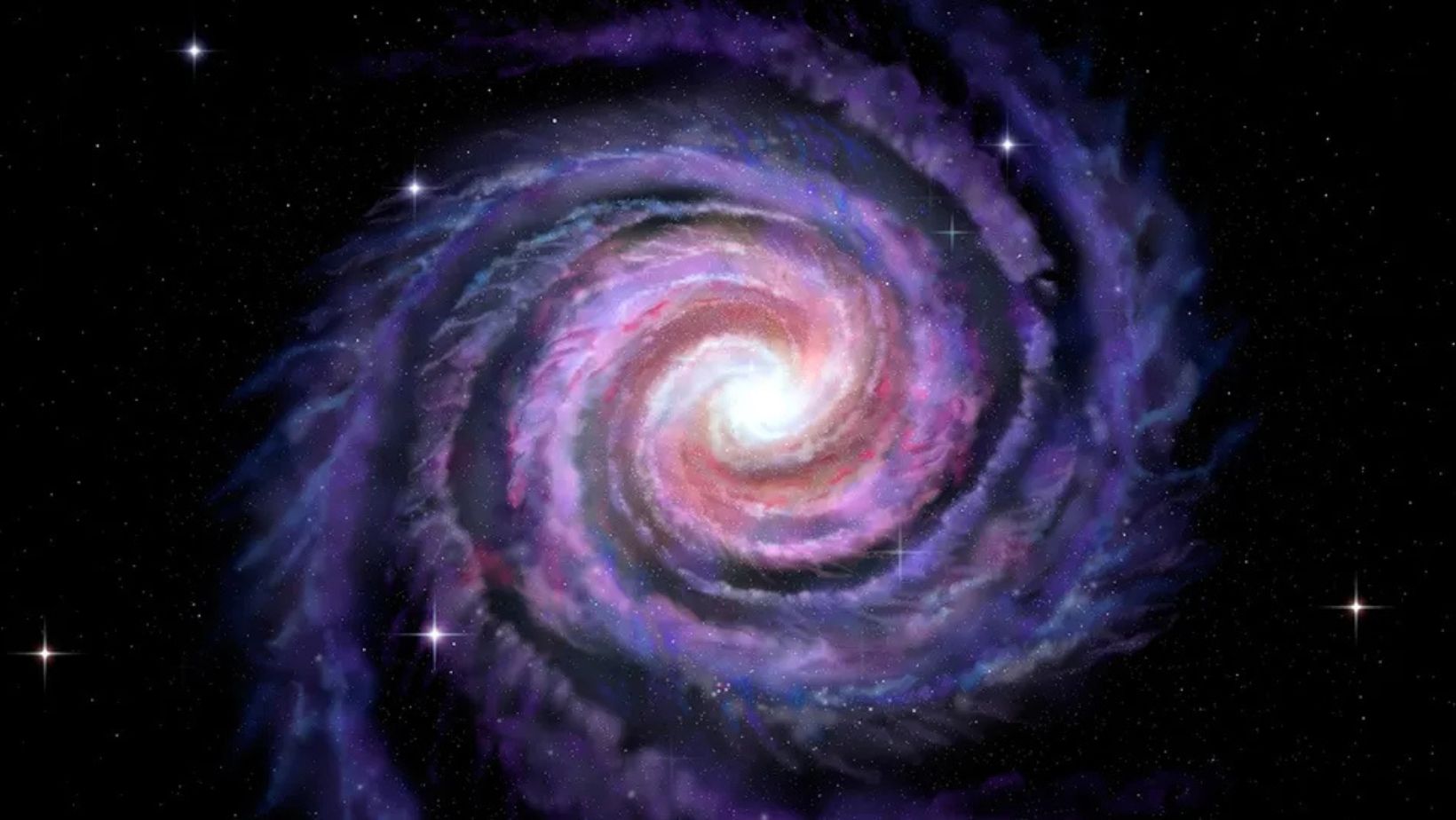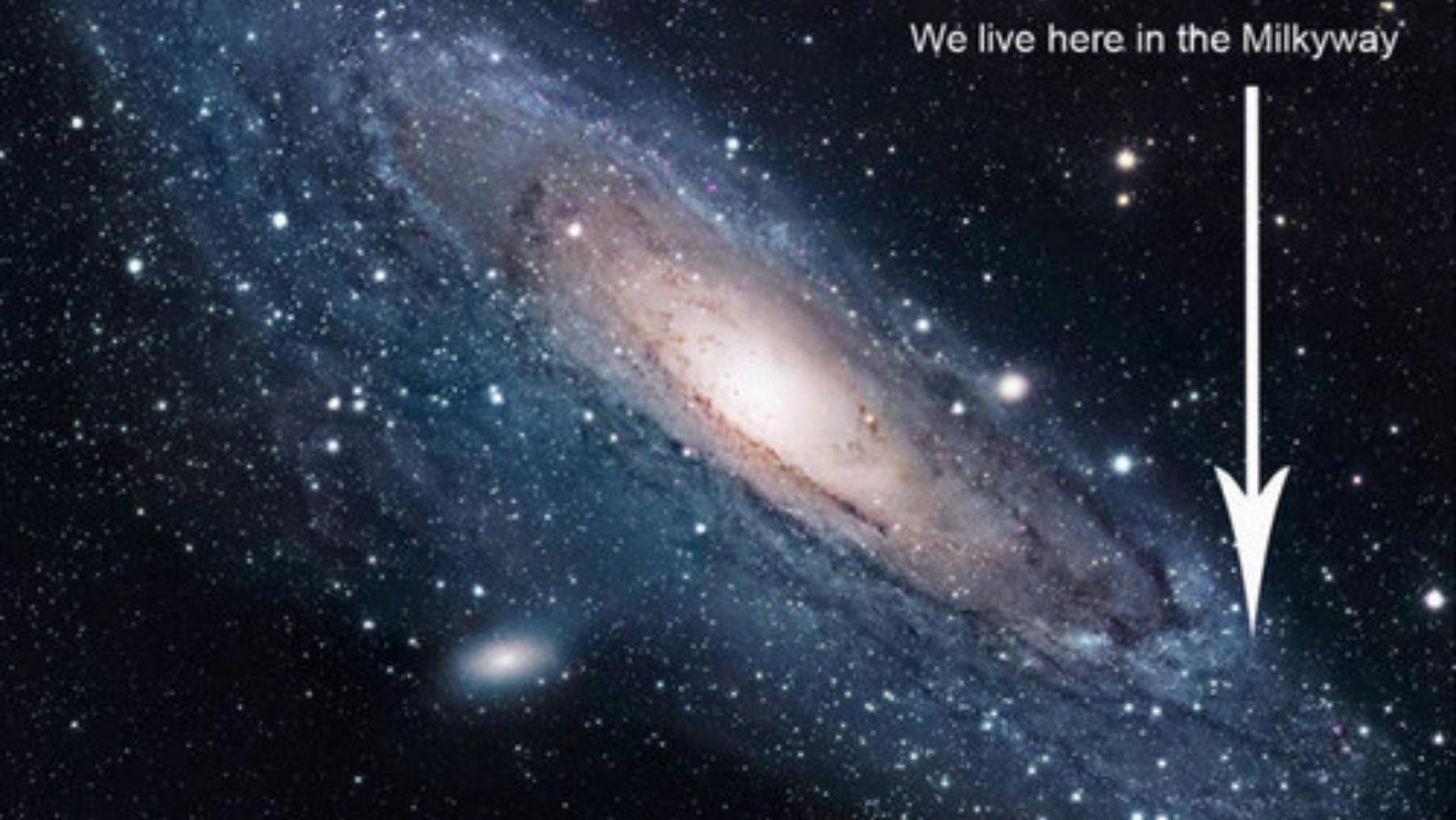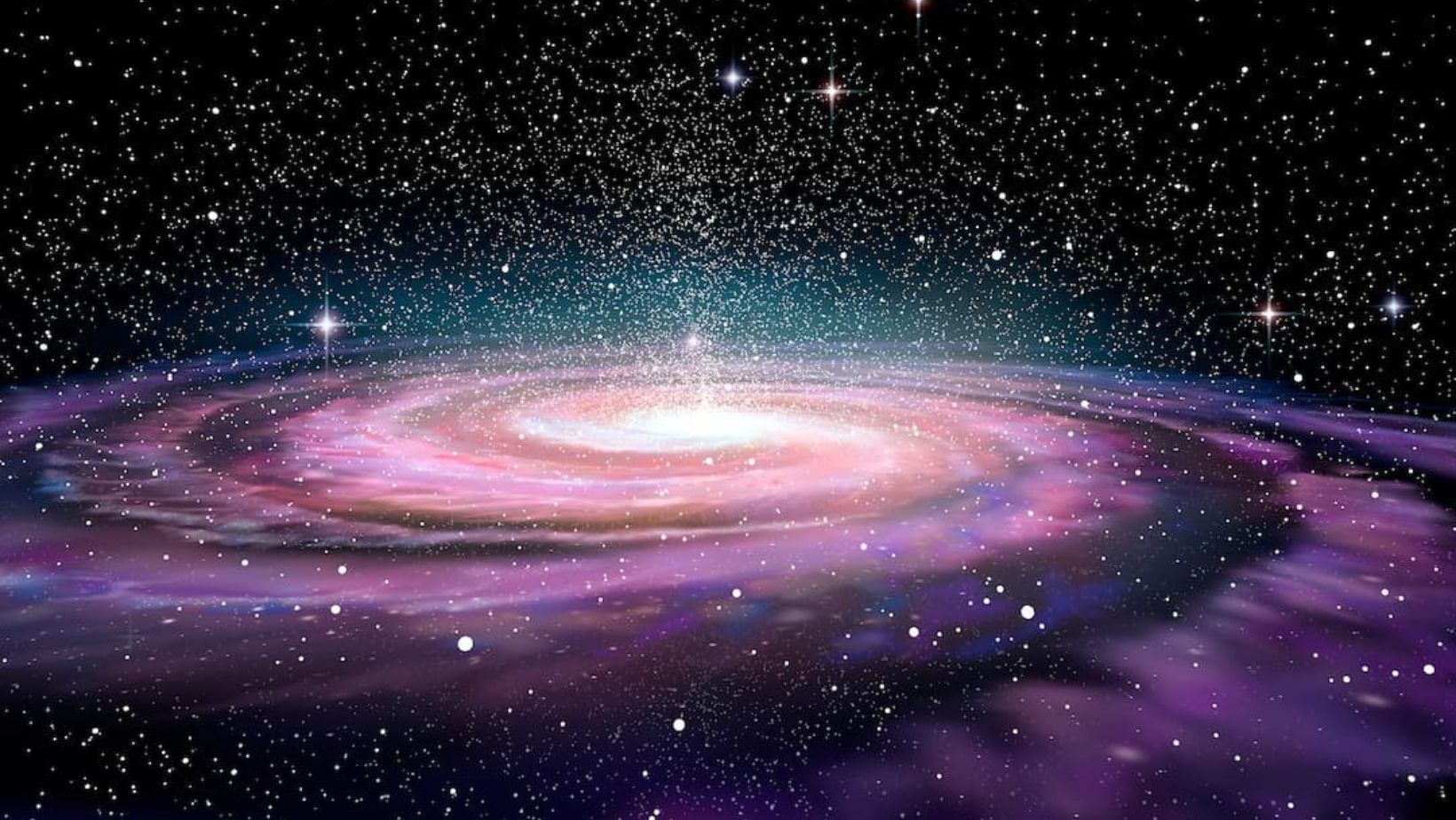Welcome to the Milky Way Galaxy, our stunning cosmic home! Spanning about 100,000 light-years, it’s a vast spiral of stars, dust, and gas, all dancing around a supermassive black hole at its center. The Milky Way isn’t just a pretty sight; it holds countless secrets about the universe. Our solar system, with its vibrant planets and the Sun, is nestled in one of the galaxy’s spiral arms, called the Orion Arm. Understanding the Milky Way helps us grasp our place in the universe and the wonders it holds. Let’s embark on this stellar journey together!
Structure of the Milky Way Galaxy

The Milky Way Galaxy has a beautiful spiral structure that resembles a whirlpool. At its center lies a dense bulge filled with stars, gas, and dust. This bulge is home to a supermassive black hole, known as Sagittarius A*. Surrounding the bulge is the flat disk, which contains most of the galaxy’s stars, including our Sun.
The disk is where we find the spiral arms, rich in star formation and interstellar material. These arms, like the Orion Arm where our solar system resides, are filled with young, bright stars. Beyond the disk lies the halo, a spherical region that contains older stars and globular clusters. The halo extends far beyond the visible disk and is mostly made up of dark matter. This complex structure plays a crucial role in the galaxy’s dynamics and evolution, helping to shape its formation over billions of years.
Size and Scale of the Milky Way Galaxy
The Milky Way Galaxy is vast, measuring about 100,000 light-years in diameter. It contains an estimated 100 to 400 billion stars, making it one of the largest galaxies in the universe. In comparison, the Andromeda Galaxy, our nearest spiral neighbor, is roughly the same size but contains about one trillion stars.
Despite its size, the Milky Way is not the largest galaxy we know of. That title goes to IC 1101, which spans over 6 million light-years across and contains around 100 trillion stars. The Milky Way’s thickness varies, with the disk being about 1,000 light-years thick and the bulge around 10,000 light-years.
Understanding the size and scale of the Milky Way helps astronomers grasp the universe’s vastness. It also provides insight into the dynamics of galaxies and their interactions. The sheer dimensions of our galaxy remind us of the incredible cosmos we inhabit.
Stars of the Milky Way Galaxy
The Milky Way Galaxy hosts a diverse array of stars, each with unique characteristics. The most common type is the main sequence star, like our Sun. These stars fuse hydrogen into helium, producing energy over billions of years. As they age, they can evolve into giant stars, expanding significantly.
Giant stars are larger and more luminous than main sequence stars. Eventually, they can end their lives in spectacular explosions known as supernovae. These remnants enrich the surrounding space with heavy elements, contributing to the formation of new stars and planets.
Star formation primarily occurs in regions called nebulae. These dense clouds of gas and dust provide the raw material needed for new stars to form. Within these nebulae, gravity pulls together particles, leading to the birth of new stars over time. The Milky Way’s rich tapestry of stars and star-forming regions highlights the dynamic nature of our galaxy. Understanding these stellar processes helps astronomers learn more about the universe’s evolution.
The Solar System’s Place in the Milky Way Galaxy

Our solar system is located in one of the Milky Way’s spiral arms, known as the Orion Arm. This arm is situated between the larger Perseus and Sagittarius arms. It is a relatively minor section of the galaxy, but it is rich in stars and stellar phenomena.
The solar system lies approximately 26,000 light-years from the galactic center. This distance places us in a safe zone, away from the intense gravitational forces near the center. The Milky Way’s core is home to a supermassive black hole, which exerts a strong influence on surrounding stars.
Being in the Orion Arm, our solar system is surrounded by billions of other stars, many of which are similar to our Sun. This location offers a unique perspective on the galaxy, allowing us to study both our immediate cosmic neighborhood and the broader Milky Way. Understanding our solar system’s position helps astronomers comprehend the galaxy’s structure and evolution.
Galactic Rotation and Dynamics
The Milky Way rotates in a complex manner, with stars and gas moving at different speeds. This rotation occurs around the galaxy’s center, where a supermassive black hole is located. The outer regions of the galaxy, including our solar system, move more slowly than those closer to the center. This difference in speed is known as differential rotation.
Understanding galactic motion also involves the influence of dark matter. Observations show that visible matter alone cannot account for the gravitational forces within galaxies. Dark matter is thought to make up a significant portion of the Milky Way’s mass, extending far beyond the visible edges.
This unseen matter helps to hold the galaxy together, preventing stars from flying off into space as they orbit the center. Dark matter creates a halo around the Milky Way, influencing its shape and rotation. Together, these dynamics reveal the complex structure and behavior of our galaxy. Studying these factors provides insight into the Milky Way’s formation and evolution over billions of years.
The Milky Way’s Companion Galaxies
The Milky Way is not alone in the universe; it has several companion galaxies, with the Andromeda Galaxy being the most notable. Andromeda is a spiral galaxy located about 2.537 million light-years away. It is part of the Local Group, a collection of more than 50 galaxies, including the Milky Way.
These companion galaxies impact the Milky Way in various ways. Their gravitational interactions can influence star formation and the overall structure of the Milky Way. Over time, these interactions may lead to galactic mergers, significantly altering the shape and composition of both galaxies.
For example, scientists predict that the Milky Way and Andromeda will collide in about 4.5 billion years, creating a new galaxy often referred to as Milkomeda. This event will reshape the stars and gas within both galaxies, leading to new star formation. Understanding these companion galaxies helps astronomers learn more about the Milky Way’s evolution and its place in the larger cosmic landscape.
Exploration and Observation of the Milky Way
The exploration of the Milky Way has evolved significantly over centuries. Early astronomers, such as Galileo, used simple telescopes to observe the galaxy’s structure. They noted its hazy band of light, which we now understand to be countless stars. However, their limited technology restricted their understanding of the galaxy’s true nature.
In recent years, modern telescopes have transformed galactic research. Instruments like the Hubble Space Telescope have provided stunning images and detailed data about various components of the Milky Way. These telescopes use advanced techniques like spectroscopy to analyze the light from stars and determine their composition, distance, and motion.
Additionally, radio telescopes have opened new avenues for studying the Milky Way. They allow astronomers to detect gas clouds and molecular structures that are invisible in optical light. These modern tools have significantly enhanced our understanding of the Milky Way’s formation, structure, and evolution, revealing its complexities and the vastness of our cosmic neighborhood.
Cultural Significance of the Milky Way Galaxy
The Milky Way holds immense cultural significance across various societies. Many cultures interpret the galaxy as a river of stars, symbolizing life and connection. For example, in Greek mythology, it was believed to be the milk of the goddess Hera, which spilled across the sky. This imagery highlights its importance in shaping ancient narratives.
In Indigenous cultures, the Milky Way often plays a central role in mythology and navigation. Australian Aboriginal groups see it as the path of ancestral beings. Similarly, Native American tribes have stories connecting the Milky Way to their creation myths. These interpretations reveal deep spiritual and practical connections to the night sky.
Folklore surrounding the Milky Way also varies widely. Some cultures associate it with seasonal changes or agricultural cycles, using its appearance to guide planting and harvesting. In contrast, others view it as a bridge to the afterlife, providing guidance for souls. These diverse beliefs show how the Milky Way has influenced cultural identity and practices worldwide. Its significance extends beyond mere observation, embedding itself into the fabric of human experience.
Future of the Milky Way Galaxy

The future of the Milky Way Galaxy is marked by exciting changes. Scientists predict that in about 4.5 billion years, our galaxy will collide with the Andromeda Galaxy. This event, known as galactic collision, will significantly alter both galaxies. Stars within these galaxies will not collide, but their gravitational forces will reshape their structures.
As Andromeda approaches, it will draw in some of the Milky Way’s satellite galaxies. This interaction will create a more complex and vibrant galactic environment. Over time, the Milky Way and Andromeda will merge into a single, larger galaxy, often referred to as Milkomeda. This transformation will lead to new star formation and a different arrangement of existing stars.
In addition to Andromeda, other smaller galaxies, like the Triangulum Galaxy, may also influence the Milky Way’s evolution. These interactions will continue to shape our galaxy long after the collision with Andromeda. Overall, the future of the Milky Way promises to be dynamic and complex, reflecting the ongoing dance of galaxies in the cosmos.
Conclusion: Milky Way Galaxy
The Milky Way Galaxy holds immense significance for humanity. It is not just our cosmic home; it is a testament to the vastness of the universe and our connection to it. Understanding the Milky Way enhances our knowledge of the cosmos and our place within it. As we continue to explore and learn more about our galaxy, we uncover insights that inspire curiosity and wonder. Embracing this journey invites everyone to appreciate the beauty and complexity of our cosmic neighborhood. So, look up at the night sky and ponder the mysteries waiting to be discovered.
FAQs
What is the shape of the Milky Way Galaxy?
The Milky Way is a barred spiral galaxy. It features a central bulge surrounded by flat, rotating disks of stars, gas, and dust, along with several spiral arms extending outward.
How many stars are in the Milky Way Galaxy?
The Milky Way contains an estimated 100 to 400 billion stars. This number is difficult to pinpoint precisely due to the galaxy’s vastness and the presence of interstellar dust that obscures some stars.
Can we see the Milky Way from Earth?
Yes, the Milky Way can be seen from Earth, particularly in areas with minimal light pollution. On clear nights, its distinctive band of light, made up of millions of distant stars, is visible across the sky.
What is dark matter, and why is it important to the Milky Way?
Dark matter is an invisible substance that does not emit or interact with electromagnetic radiation. It makes up about 27% of the universe and plays a crucial role in the Milky Way’s structure and dynamics, helping to hold galaxies together.
How does the Milky Way compare to other galaxies?
The Milky Way is classified as a large barred spiral galaxy, similar in size and structure to other galaxies like the Andromeda Galaxy. However, each galaxy has unique characteristics, such as star density and chemical composition, contributing to its overall identity.

